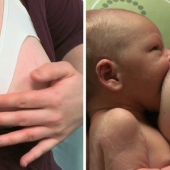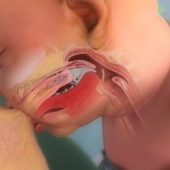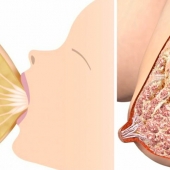In order for effective breastfeeding to occur, a good latch is required between the infant mouth and the breast. An effective latch requires a few things from the infant. The mouth is widely open with lips that are flared or curled out. The tongue is extended over the gum and under the nipple. The nipple needs to be fully inserted into the mouth including some or all of the Areola.
If any of these factors are missing breastfeeding may become ineffective. Symptoms for the mother include prolonged feedings, painful nipples, and decreased milk production while infants may exhibit noisy suckling and gas pains. A normal infant tongue has good mobility. Tongue-Tie is when the tongue is stuck to the floor of the mouth preventing adequate mobility which leads to an ineffective latch.
The tongue tie may also be hidden under the mucosal lining; a condition called posterior tongue tie. With tongue tie, the tongue tip does not extend over the gum causing the newborn gum to chew on the nipple during feeding. Also, the up-down motion of the tongue is hindered preventing an adequate suck, resulting in decreased milk production.
A surgical procedure called tongue tie release can easily correct this cause of ineffective breastfeeding. Upper lip tie is when the newborn's upper lip does not curl up or flare out enough resulting in loss of suction and the nipple to be incompletely engaged within the mouth. A surgical procedure called upper lip tie release can easily correct this cause of breastfeeding difficulty.
- 921 views













